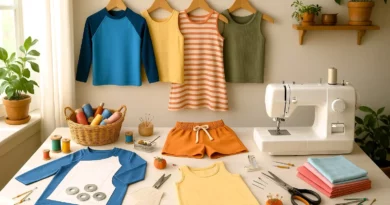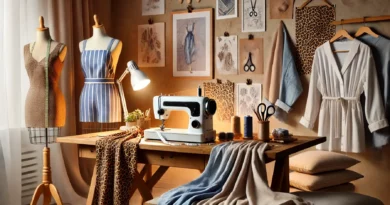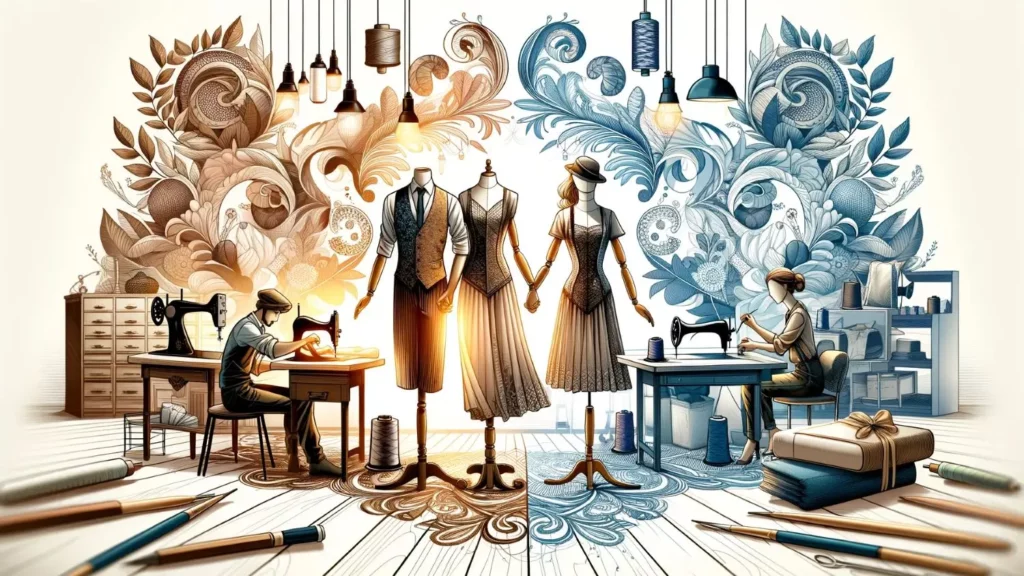
Traditional Couture in Modern Fashion
In the ever-changing world of fashion, where innovation and style often define trends, there’s an undercurrent that embraces the past while shaping the future: the integration of traditional couture into modern designs.
This bold yet subtle fusion of genres represents more than just a passing trend. It embodies a dialogue between eras. A celebration of cultural roots. An exploration of new artistic possibilities.
Traditional couture, with its refined techniques, distinctive patterns and rich heritage, offers an inexhaustible source of inspiration. From the meticulous embroidery of Asia to the colorful weavings of Africa, each culture brings unique elements to the table of fashion’s grand banquet, bearing witness to know-how handed down from generation to generation. These techniques, once confined to craft circles, are now finding new life in the collections of contemporary designers. This proves that the past can not only coexist with the present, but also enrich it.
However, blending elements of traditional couture with modern fashion is more than just a juxtaposition of styles. It’s a delicate art that requires a deep understanding of both worlds. It’s about creating a harmonious balance, where every traditional detail finds its place in a contemporary context, without losing its essence or authenticity.
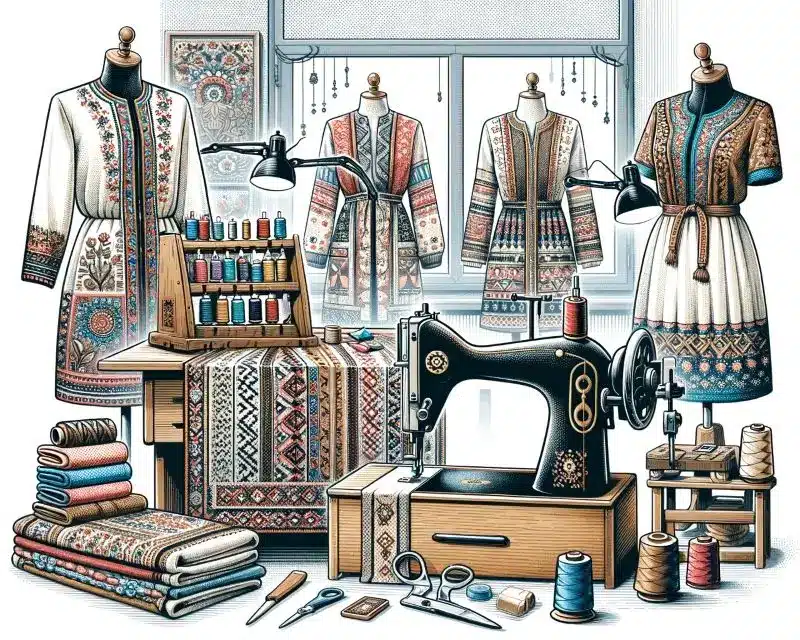
Understanding Traditional Couture
To fully appreciate the fusion of traditional couture with modern fashion, it’s essential to first understand its origins and significance. Traditional couture, with its rich history and techniques, is an art form that has developed in various cultures around the world. Each technique, whether derived from Chinese embroidery, Indian block printing or Andean weaving, tells a story, reflects a cultural identity and preserves a heritage.
These techniques, often handed down from generation to generation, are much more than simple garment-making methods. They are imbued with symbolism, history and social values. For example, Japanese Sashiko embroidery, originally used to reinforce garments and keep them warm, is now recognized for its distinctive geometric patterns and cultural significance.
In many cultures, traditional sewing is also closely linked to rites of passage, celebrations and social status. The patterns and colors used can indicate the wearer’s age, marital status or even region of origin. So these techniques are not just creative tools, but means of expression and communication.
Despite globalization and the evolution of fashion, traditional couture is resisting. This testifies to the durability and adaptability of these practices. By integrating these elements into modern fashion, designers are not only demonstrating innovation. They are contributing to the preservation and transmission of these ancestral arts.
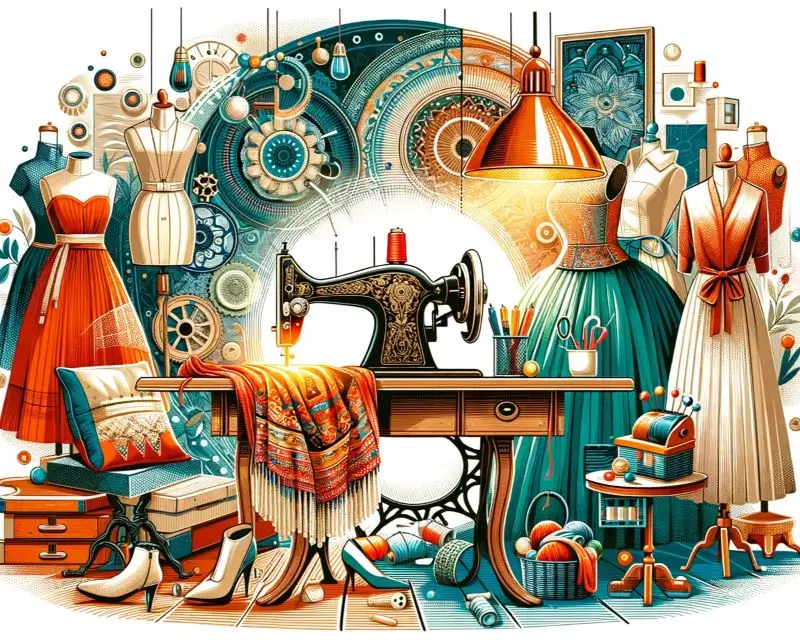
Traditional Couture in Modern Fashion
Incorporating traditional couture into contemporary fashion is not just a tribute to the past. It’s a bold reinvention that defines the new frontiers of creativity. By blending these ancestral elements with contemporary styles, modern designers weave a visual narrative that transcends time and geographical boundaries.
From haute couture runways to ready-to-wear collections, modern fashion thrives on this diversity. Designers such as Dries Van Noten and Yohji Yamamoto, for example, are renowned for their ability to fuse traditional motifs with avant-garde silhouettes. In this way, they create pieces that are both timeless and innovative. These stylistic collaborations are not just about appropriation. They are a respectful dialogue between past and present, often created in partnership with local artisans to preserve authenticity.
This trend has also given rise to a growing awareness of sustainability in fashion. By reusing traditional techniques, designers contribute to environmental conservation by reducing reliance on mass production methods. These practices also promote fair trade, supporting artisan communities and contributing to their economic empowerment.
Mixing genres also opens the door to richer personal expression. By integrating traditional elements, designers can express their identity, values and cultural background in a unique way. This fusion is not just a question of style; it’s a statement of respect, diversity and uniqueness.
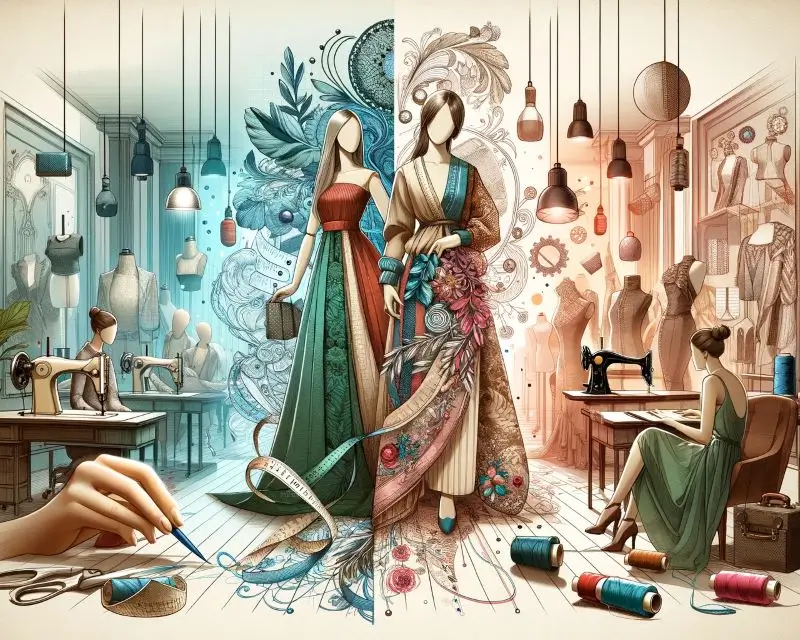
Techniques and Tips for Merging Styles
Merging traditional couture with modern fashion is not a simple matter of juxtaposition. It’s a delicate art that requires thought, creativity and sensitivity. Here are a few techniques and tips for integrating these two worlds harmoniously:
- Choose the Right Pieces: Start by selecting traditional elements that can integrate naturally with modern designs. For example, use a traditional embroidery motif on a contemporary jacket. Or incorporate a traditional fabric into a modern dress.
- Balancing colors and patterns. It’s crucial to strike a balance between traditional and modern colors and patterns. Too much traditional detail can overwhelm a contemporary design, while too little can seem out of place. The aim is to create visual harmony.
- Respect Authenticity: Make sure you understand the significance of any traditional motifs or techniques you use. This not only ensures respect for cultures, but also enriches the narrative of your creation.
- Innovation in Materials: Experimenting with modern materials can provide a new context for traditional techniques. For example, applying ancient embroidery to high-tech fabric can create an intriguing contrast.
- Mixed Construction Techniques: Combine modern construction techniques with traditional methods. This can include using contemporary cuts with traditional finishes, or vice versa.
- Visual Storytelling: Each piece should tell a story, merging past and present. Think about how each traditional element contributes to the overall narrative of the piece.
- Collaborations and Consultations: Working with traditional craftsmen can bring authentic depth to your work. Their expertise can help integrate traditional elements in a respectful and innovative way.
Sewing Projects and Tutorials
The fusion of traditional and modern styles in sewing can seem daunting at first. But with a few project ideas and tutorials, you’ll be well on your way to creating unique and expressive pieces. Here are some inspiring projects to get you started:
- The Reinvented Midi Skirt. Add a traditional touch to a modern midi skirt by incorporating traditional fabric trims or appliqués. This simple yet elegant project can be a great starting point for beginners.
- Customize a T-Shirt with Traditional Patterns. Learn how to transform a basic t-shirt into a unique fashion piece by adding traditional motifs through embroidery or fabric painting.
- The Ethnic Tote Bag. Create a practical tote bag with modern fabrics, incorporating panels of traditional fabrics for an ethnic touch. This project lets you explore the mix of textures and patterns.
- Tutorial: Make a Textile Necklace: Discover how to use scraps of traditional fabric to create an original textile necklace. This project is ideal for using small pieces of precious fabric.
- Customized Jacket. Give new life to a denim or leather jacket by adding traditional sewing elements such as embroidered patches or fabric inlays.
- Fabric Blending Techniques. Learn the basics of combining fabrics of different textures and origins to create harmonious and interesting pieces.
These projects and tutorials are designed to be accessible to all sewing skill levels. They offer an opportunity to explore creativity while respecting and valuing tradition. They serve as a springboard for those wishing to experiment with designs that marry the charm of the old with the boldness of the new.
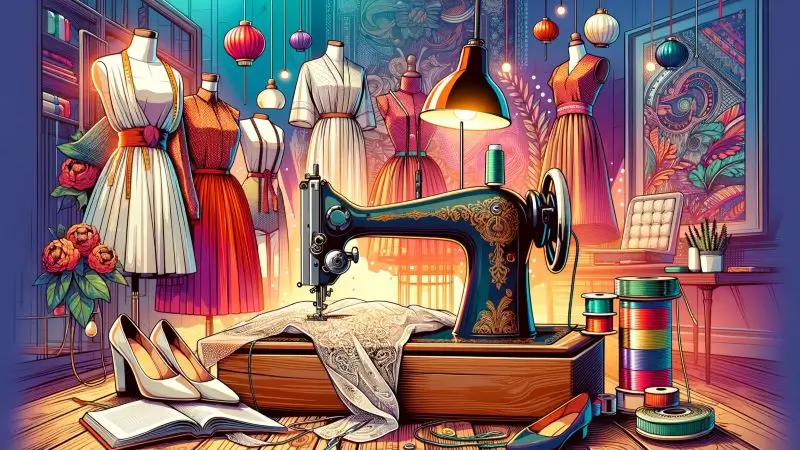
Weaving together Past and Present
At the end of our exploration of the fusion between traditional couture and modern fashion, it becomes clear that this approach is much more than just an aesthetic trend. It’s a celebration of history. A recognition of cultural richness. And a step towards more conscious, sustainable fashion.
Traditional couture, with its rich patterns and age-old techniques, brings an unrivalled depth and authenticity to contemporary fashion. By integrating it into modern designs, we’re not just being creative. We honor and preserve a precious cultural heritage. This fusion creates garments that tell stories and transcend borders and generations. It reflects a diversity and complexity that lies at the heart of the human experience.
The blend of traditional couture and modern fashion is not just a style, it’s a philosophy. It invites us to look back and learn. To look around to appreciate, and to look forward to innovate. By weaving together past and present, we create a future where fashion is not only beautiful, but also meaningful and responsible.

